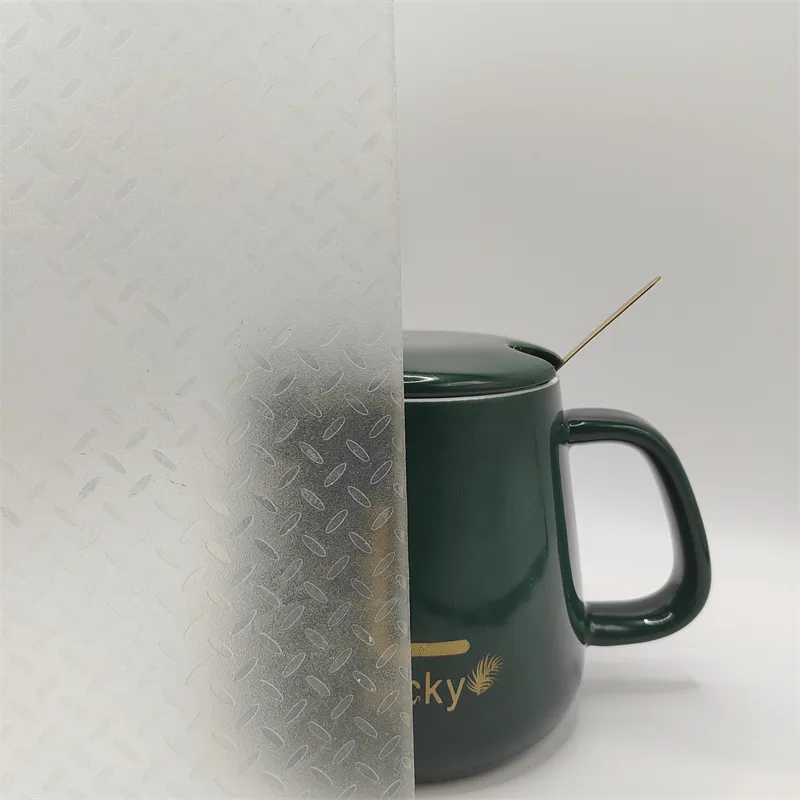Nov . 26, 2024 09:06 Back to list
3mm clear float glass
The Versatility and Applications of 3mm Clear Float Glass
Float glass, a fundamental building material, is extensively used in the construction and manufacturing industries. Among its various thicknesses, 3mm clear float glass stands out for its balance of strength, weight, and clarity. Understanding its properties and applications can illuminate its vital role in modern architecture and design.
What is 3mm Clear Float Glass?
Float glass is produced by pouring molten glass onto a surface of molten tin, allowing it to spread and form a smooth, even layer. This process results in glass that is not only clear but also has a consistent thickness and few impurities. The 3mm specification indicates its thickness, which is significant for both functional and aesthetic purposes. This thickness offers a lightweight option while maintaining structural integrity, making it ideal for various applications.
Characteristics of 3mm Clear Float Glass
The most prominent characteristic of 3mm clear float glass is its optical clarity. It transmits light effectively, making it an excellent choice for windows, displays, and other applications where transparency is essential. Additionally, it has a high level of reflectivity, which can be utilized in decorative elements and design features.
In terms of strength, float glass possesses a good degree of resilience. While 3mm thick glass is not as robust as thicker varieties, it is sufficient for many uses and can be reinforced through processes such as tempering or lamination, should additional strength be required.
Applications in Architecture and Design
One of the most common uses of 3mm clear float glass is in windows and doors. Its lightweight nature makes it easier to handle and install, while its clarity allows for maximum natural light, enhancing the atmosphere of residential and commercial spaces. Furthermore, when used in double-glazed windows, it can improve energy efficiency by aiding in thermal insulation.
3mm clear float glass

In retail, 3mm clear float glass is frequently employed for display cases and shopfront windows. Its transparency ensures that products are visible to customers without obstruction, which can significantly enhance sales opportunities. Its reflective properties can also be utilized in advertising displays, where the glass surface can highlight promotional materials.
Interior design also benefits from the use of 3mm clear float glass. It can be used in partitions to create the illusion of larger spaces, allowing light to flow between areas without the confines of solid walls. Additionally, glass shelves and tables can incorporate 3mm glass to add a touch of elegance to any room.
Safety Considerations
While 3mm clear float glass is versatile, it is essential to consider safety aspects, especially in high-traffic areas or where impact is a concern. Regular float glass can shatter upon impact, leading to dangerous situations. To mitigate this risk, design professionals often recommend using tempered or laminated glass for specific applications. Tempered glass is heat-treated, which increases its strength, making it more resistant to breakage. Laminated glass consists of two or more layers of glass bonded together with an interlayer, ensuring that even if broken, the glass remains intact rather than shattering into sharp pieces.
Environmental Impact and Sustainability
In today’s eco-conscious world, the sustainability of materials is more important than ever. Float glass is primarily made from silica sand, soda ash, and limestone, all of which are abundant natural resources. Moreover, glass is recyclable, allowing it to be repurposed for various uses without significant loss of quality. This characteristic makes 3mm clear float glass an environmentally friendly option, particularly when considering its longevity in buildings and structures.
Conclusion
3mm clear float glass is a remarkable building material that offers a combination of clarity, versatility, and efficiency. Its applications range from everyday uses in windows and doors to more innovative interior design solutions. While it is important to consider safety measures in its application, the benefits of its lightweight and eco-friendly properties make it a popular choice in modern architecture. As trends in sustainable design continue to evolve, the role of 3mm clear float glass is likely to expand, solidifying its place in the future of building materials.
-
Safety and Style with Premium Laminated Glass Solutions
NewsJun.24,2025
-
Reinvents Security with Premium Wired Glass
NewsJun.24,2025
-
Premium Float Glass Line for Modern Architecture
NewsJun.24,2025
-
Low Emissivity Glass for Energy-Efficient Architecture
NewsJun.24,2025
-
High-Performance Insulated Glass Solutions for Modern Architecture
NewsJun.24,2025
-
Elevates Interior Style with Premium Silver Mirror
NewsJun.24,2025
Related PRODUCTS














